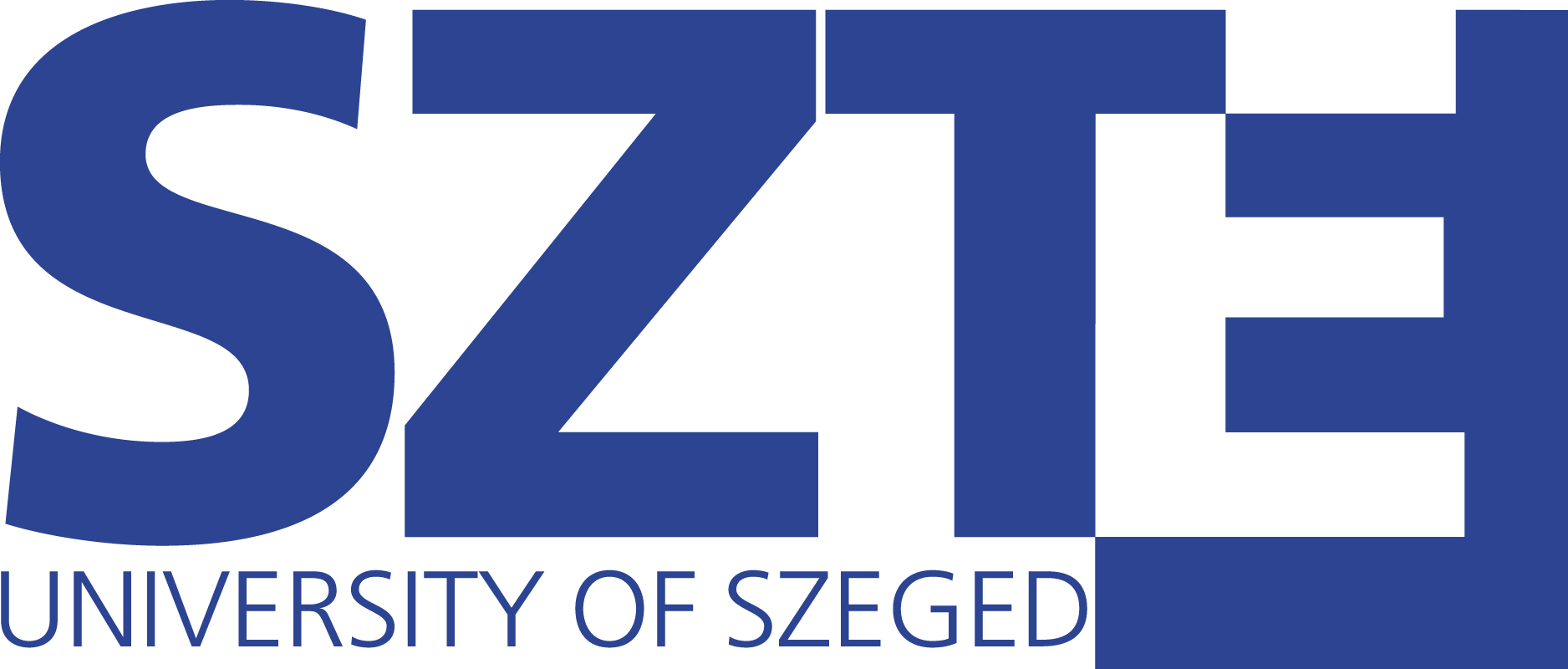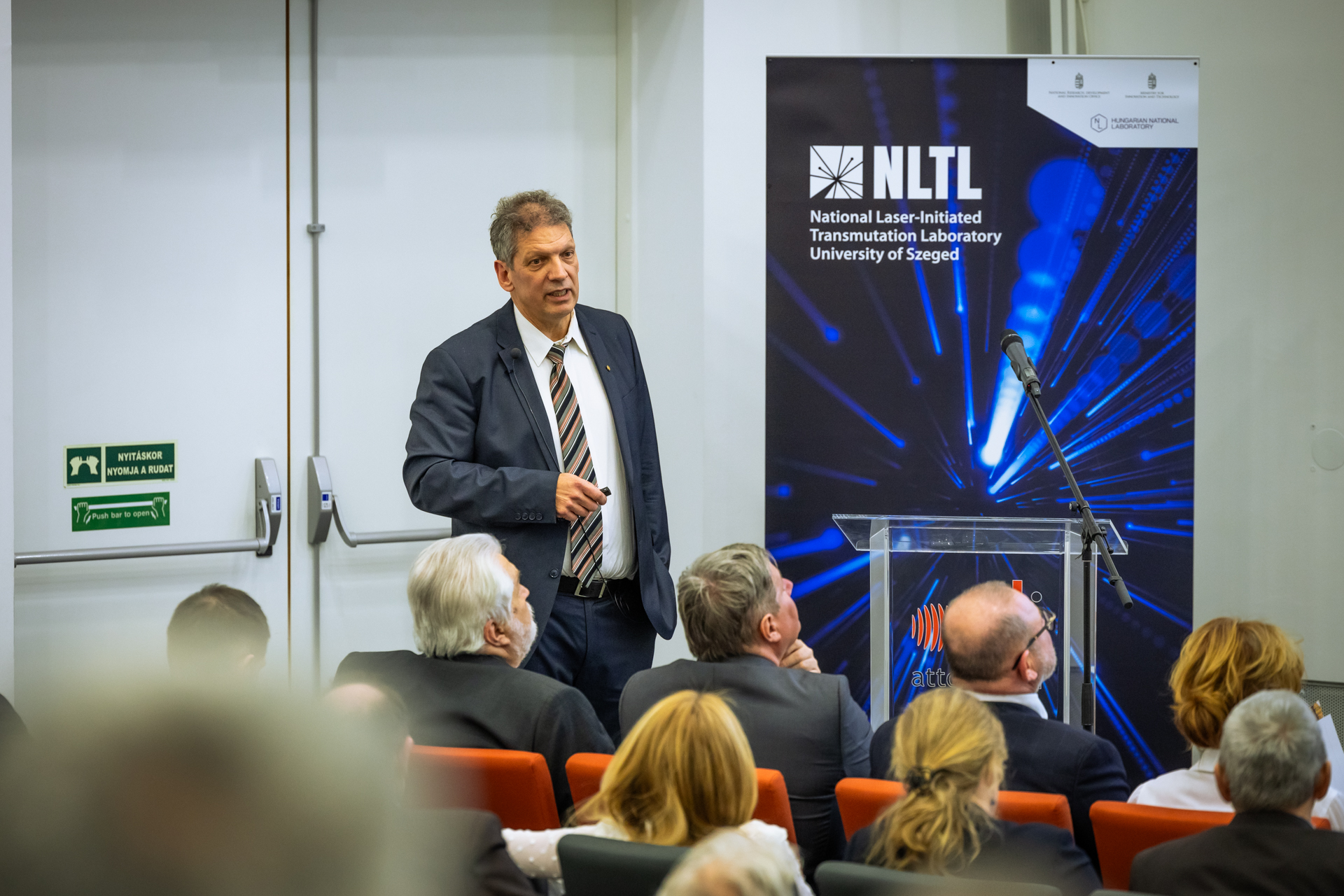
The National Laser-Initiated Transmutation Laboratory, established through a collaboration between the University of Szeged and the ELI ALPS Laser Research Center, has achieved internationally recognized outcomes, primarily focusing on nuclear waste management and the application of neutrons generated by laser pulses. These advancements were showcased at the Laboratory’s project closing conference, where Minister for Energy Csaba Lantos praised the project as a strong validation of the importance of funding scientific research. Also at the event, László Bódis, Deputy State Secretary for Innovation, announced the launch of the ‘Missions’ initiative, a new government program designed to leverage the achievements of national laboratories.
In 2019, the Hungarian government approved a project at the University of Szeged focused on the laser-induced transmutation of nuclear waste, specifically aimed at converting long-lived radioactive elements. The research was driven by the potential to develop advanced neutron generation technology using the short-pulse lasers available at the ELI ALPS Laser Research Center. At that stage, the idea was based solely on simulations, with no experimental data or technological expertise to validate it. The theoretical foundations of laser-driven neutron generation were first published in 2020 by Károly Osvay, Head and Principal Investigator of the newly established National Laser-Initiated Transmutation Laboratory at the University of Szeged, and Gábor Szabó, university professor and Managing Director of ELI ALPS.
In a recent interview, Károly Osvay discussed the key scientific achievements of his research group. Over the course of the five-year transmutation project, they successfully demonstrated that continuous neutron generation is achievable with low-energy, short-pulse lasers – marking a first in the world. Through meticulous scientific and technical innovations, the team achieved a neutron generation rate of 108 neutrons per second, setting a current world record. In addition to 15 publications and 2 patents, the University of Szeged’s neutron beamline is now part of the technologies offered by the ELI ERIC consortium. This equipment has allowed Károly Osvay to pursue further research in radio-biological and medical isotope production, as well as the development of radiation environments for testing space vehicles in a vacuum.
On February 7, an international conference was held at the ELI ALPS Laser Research Center to showcase the achievements and potential applications from the first five years of the transmutation project. The project was originally launched by László Palkovics, former Minister for Innovation and Technology, following the proposal of Nobel laureate physicist Gérard Mourou and Gábor Szabó, laser physicist and Managing Director of ELI ALPS. The former portfolio for innovation and technology has since been divided into two areas: one now under the supervision of Csaba Lantos, Minister for Energy, and the other overseen by László Bódis, Deputy State Secretary for Innovation. The closing conference was attended by both government officials as well as Gérard Mourou, a research professor at the University of Szeged. In addition to welcoming these three distinguished guests, the event’s host, Gábor Szabó, greeted other notable guests, including László Rovó, professor and Rector of the University of Szeged; Péter Domokos, physicist and co-chair of the National Research, Development and Innovation Office (NRDI Office); Balázs Gulyás, brain researcher and president of the HUN-REN Hungarian Researchers Network; as well as Allen Weeks, Director General of ELI ERIC. Gábor Szabó emphasized that the current innovation policy in Hungary prioritizes two major laser research projects: Ferenc Krausz’s molecular fingerprint program and the University of Szeged’s transmutation research project.
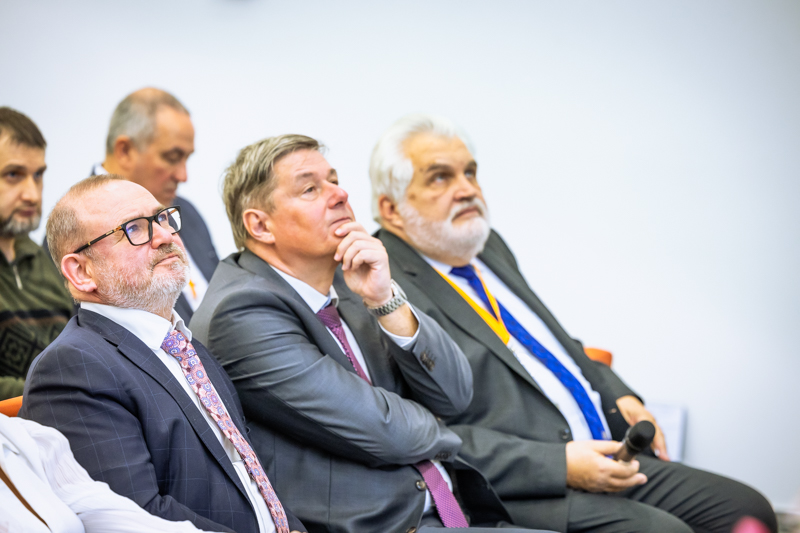
Csaba Lantos, László Rovó, and Gábor Szabó at the National Laser-Initiated Transmutation Laboratory’s project closing conference
Photo: Ádám Kovács-Jerney
Prof. Dr. László Rovó: Numerous research groups are set to achieve outstanding results in the coming years
In his welcome speech, Prof. Dr. László Rovó, Rector of the University of Szeged, emphasized that throughout history, development has always been accelerated by key turning points – such as the invention of the wheel, the printing press, and the computer. Each of these breakthroughs opened new doors and raised new questions, with the successors of pioneering scientists providing the answers. The rector illustrated this idea with an example from the university’s own history:
“The history of science spans centuries, with generations of researchers continuously expanding upon the knowledge of their predecessors. A notable example of this process at the University of Szeged was Klebelsberg Kuno’s creation of a biochemical research center, which led to the invitation of Albert Szent-Györgyi, who would later receive the Nobel Prize. This effort in institutional development was crucial to Szent-Györgyi’s receipt of the 1937 Nobel Prize and also played a key role in launching the career of one of today’s brightest minds, Katalin Karikó.”
According to Prof. Dr. László Rovó, the University of Szeged has a similar tradition in laser physics, with research in the field built on reliable and well-structured foundations. It is this legacy that has served as the cornerstone for the establishment and operation of the ELI ALPS laser research institute.
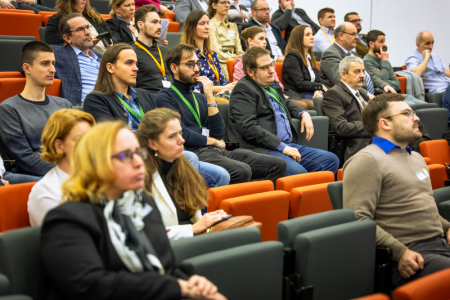 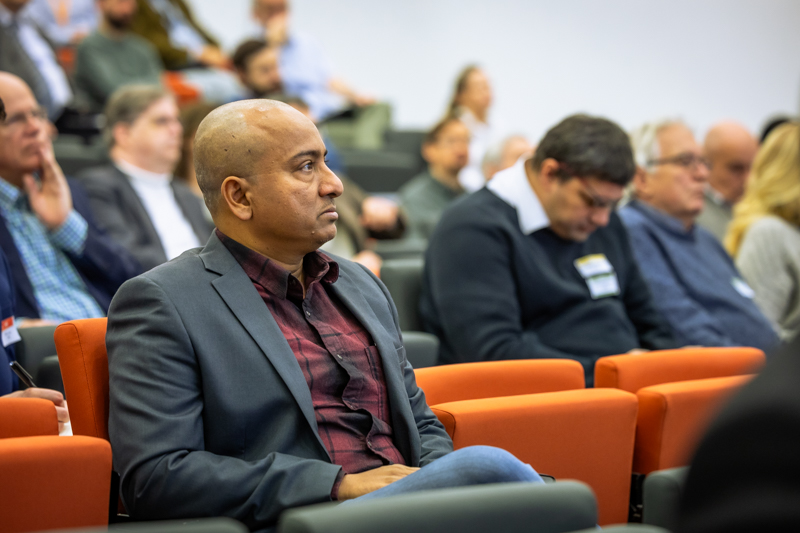 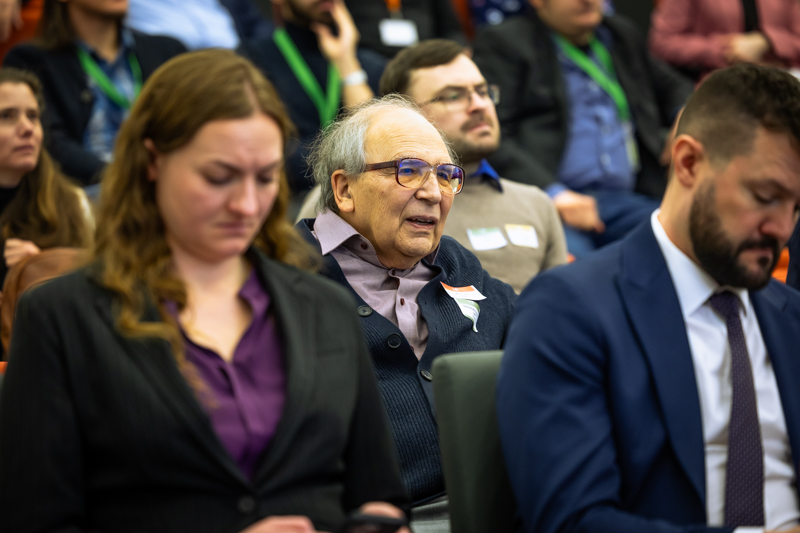 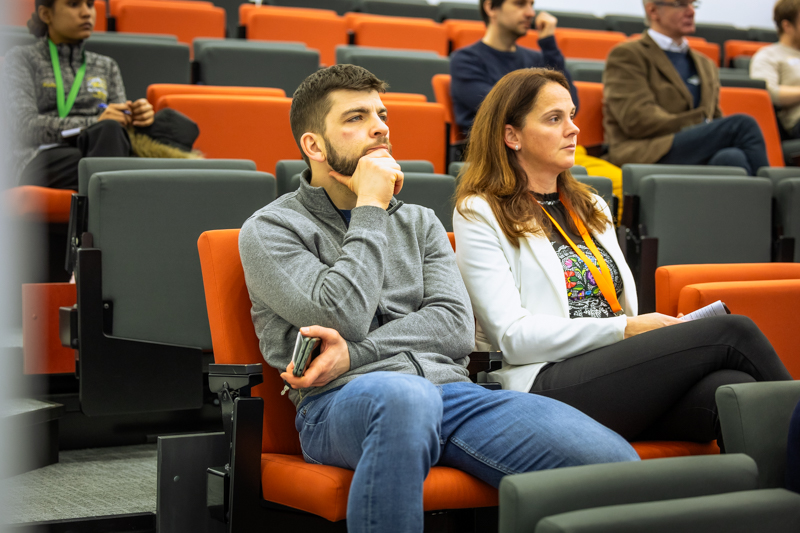  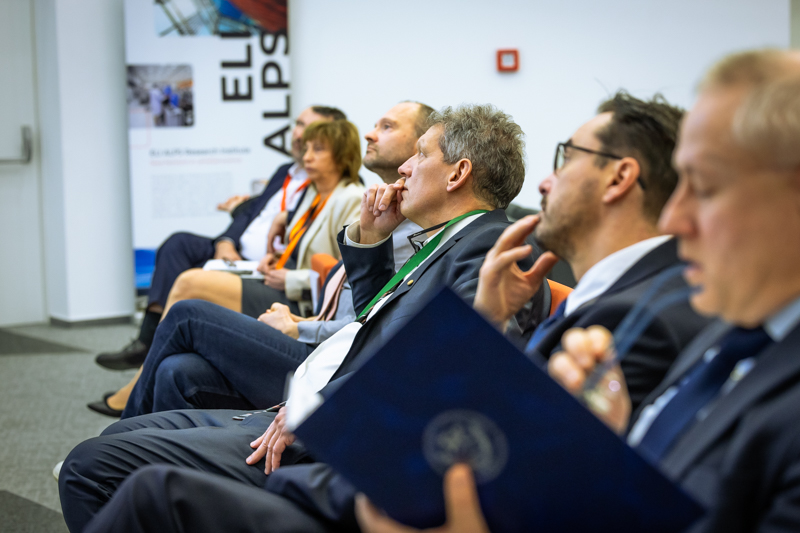  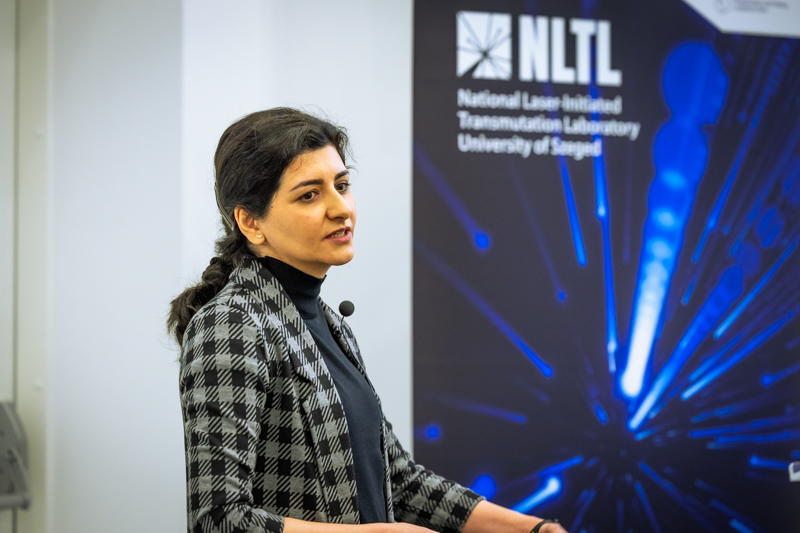 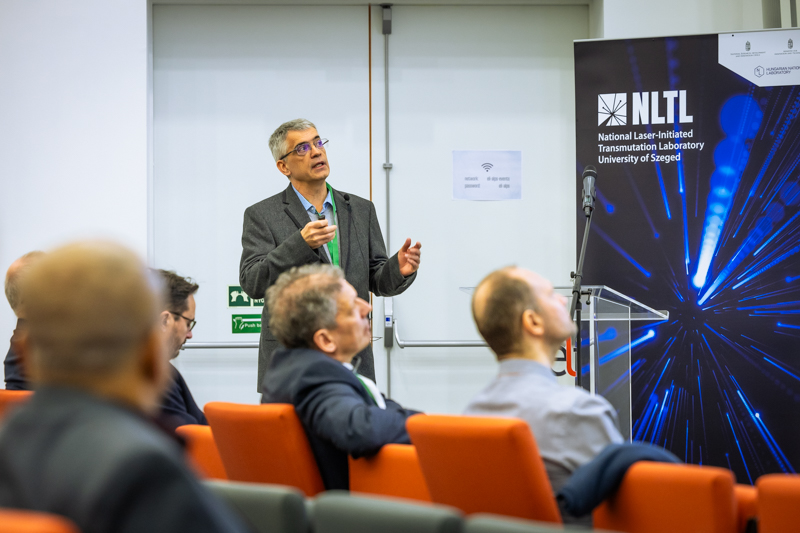   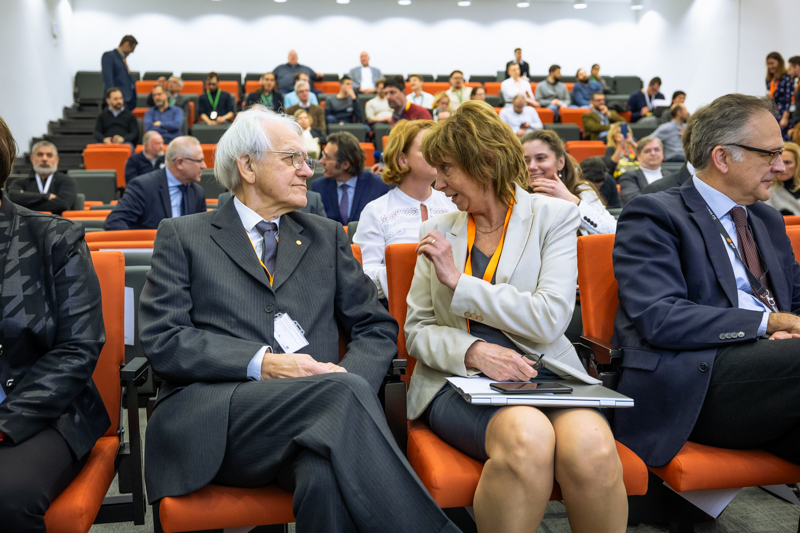 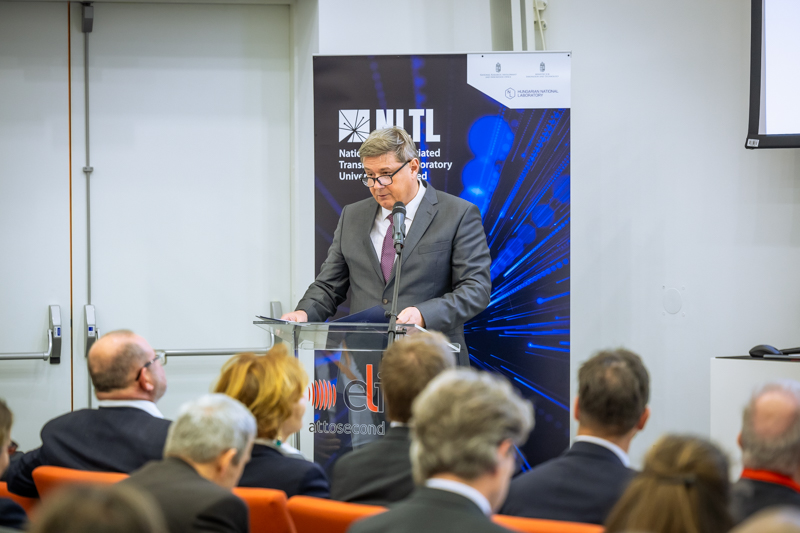  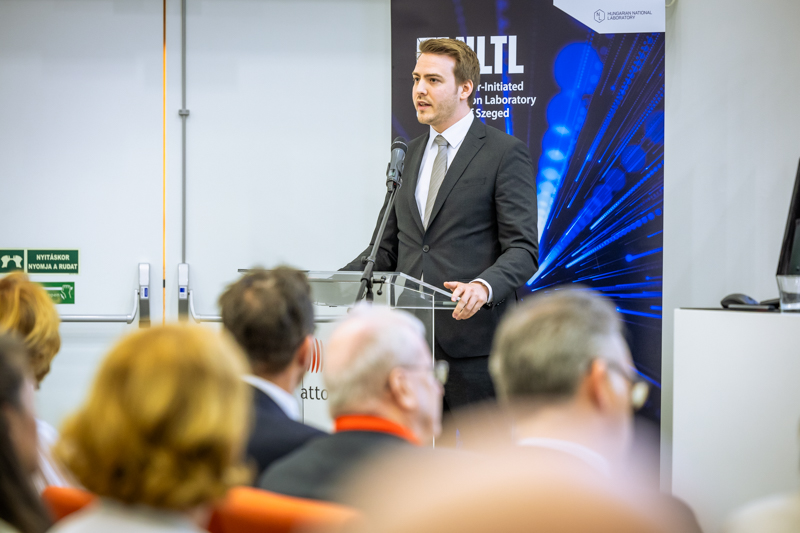 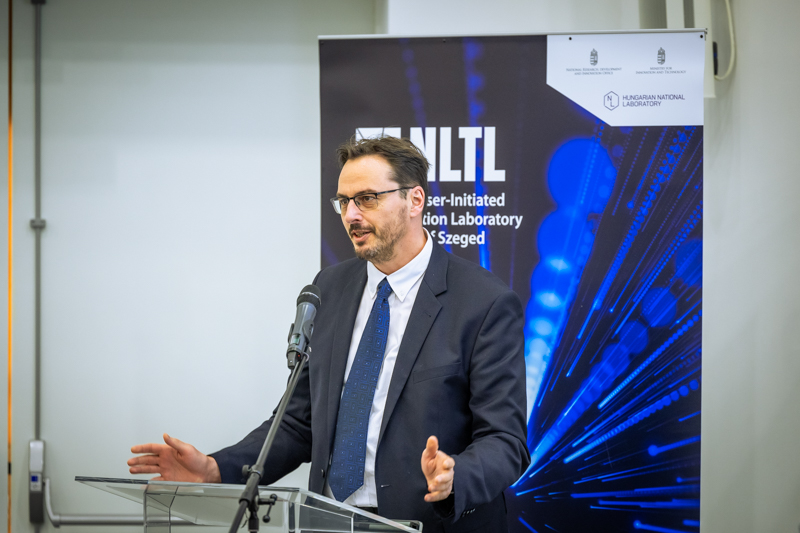  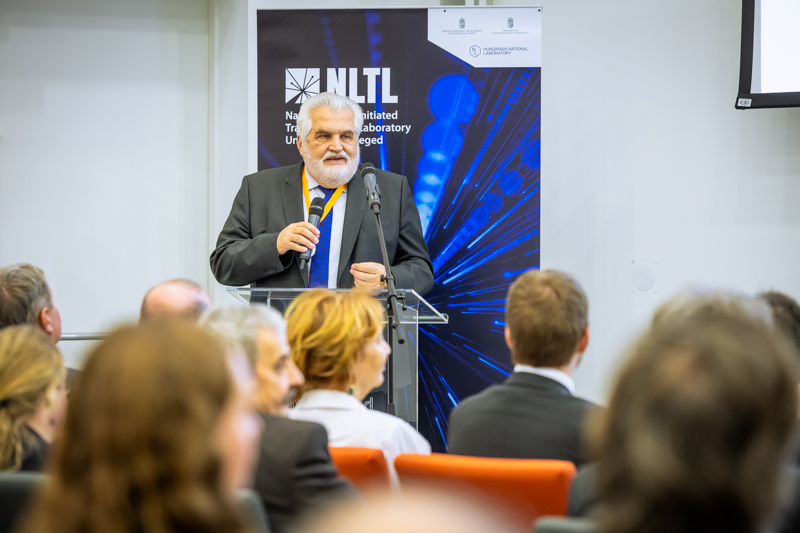 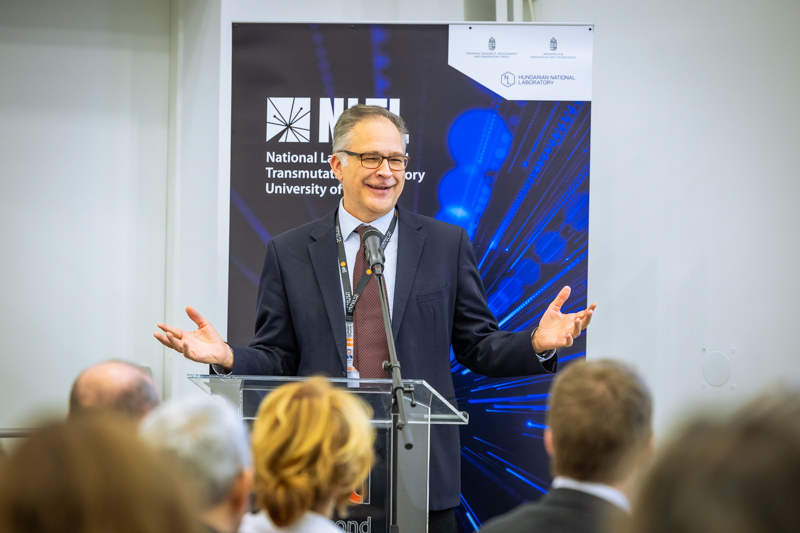 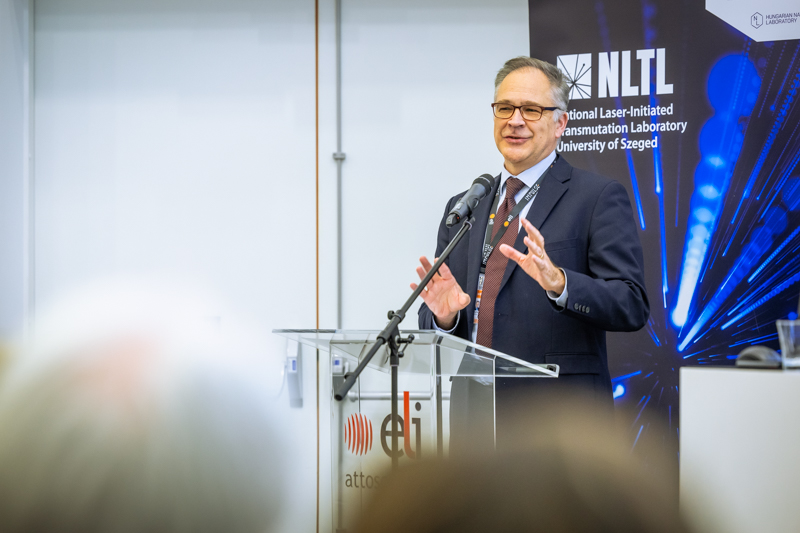 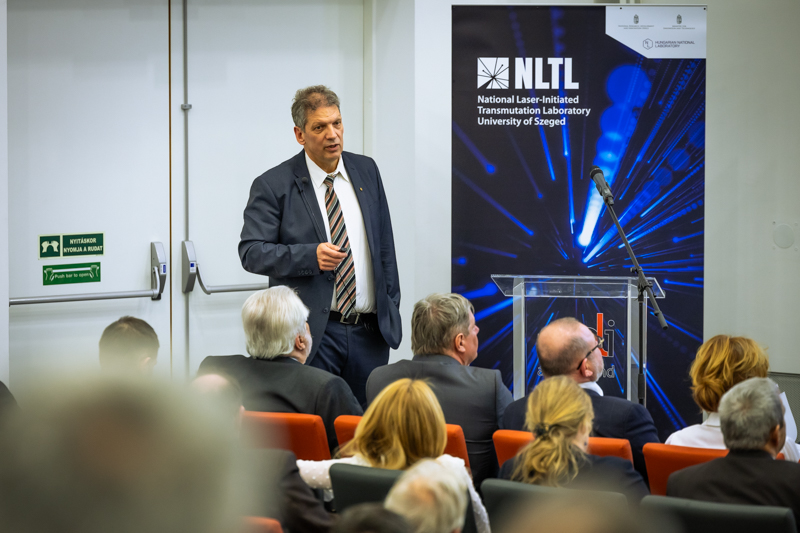 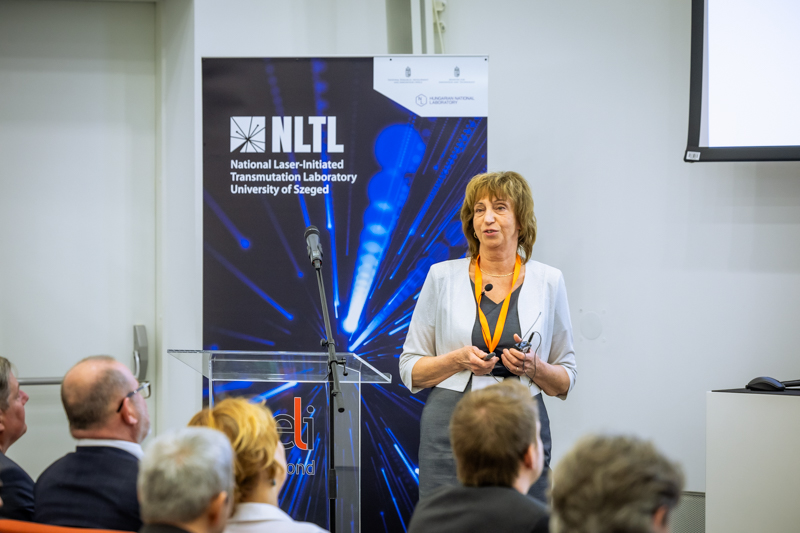 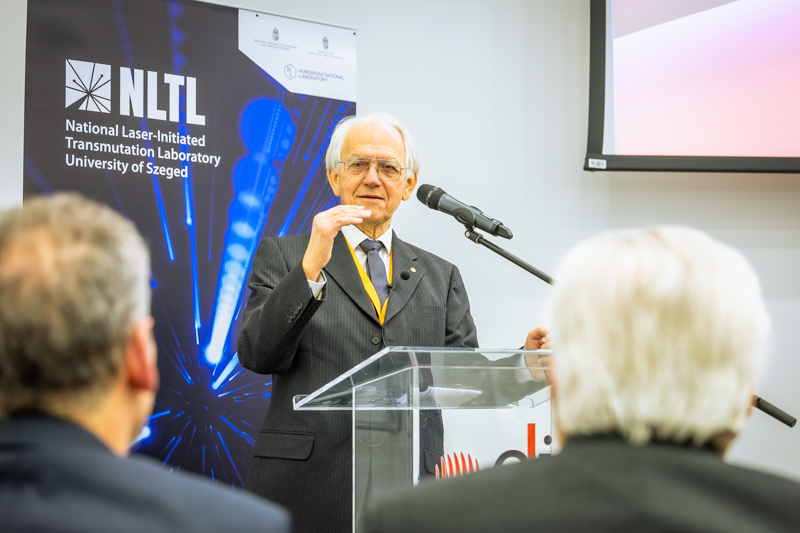 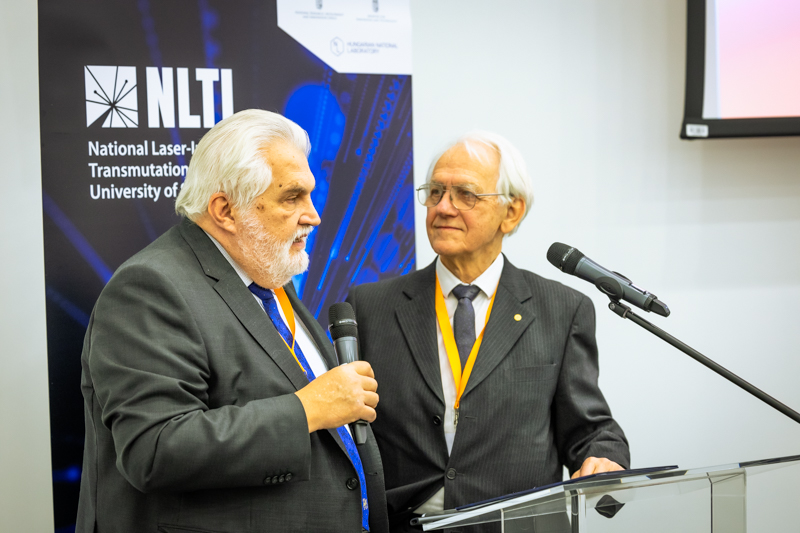 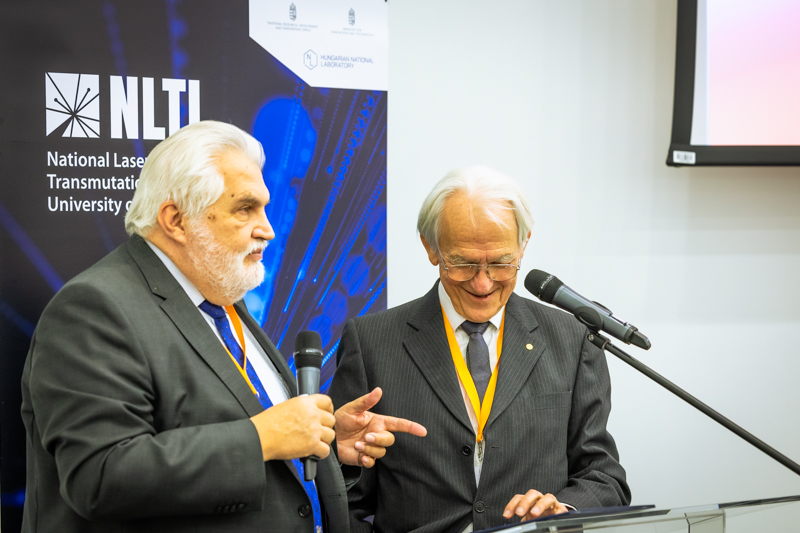 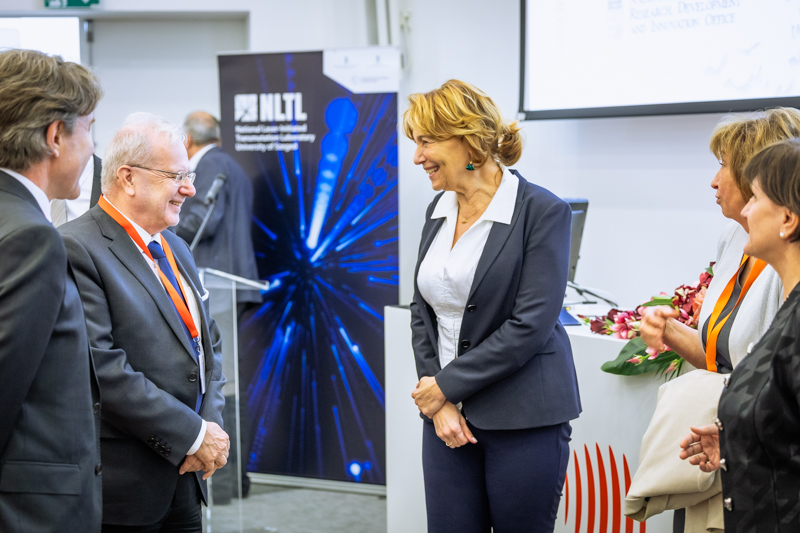 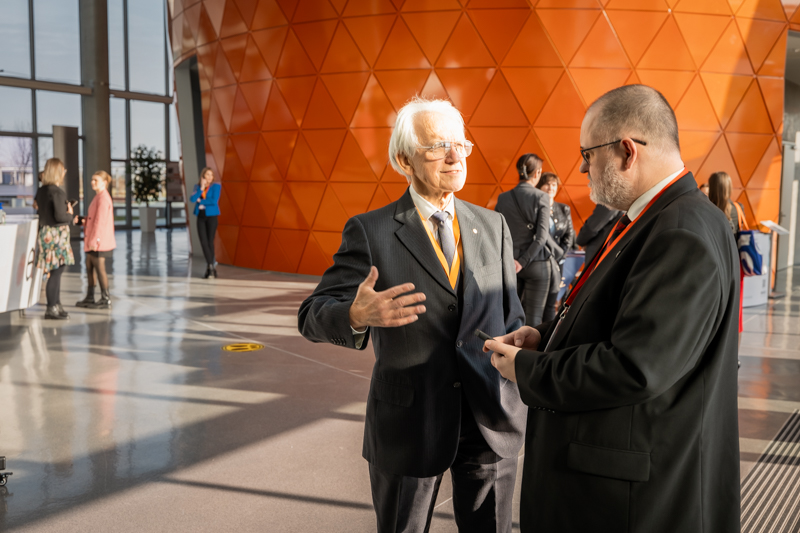 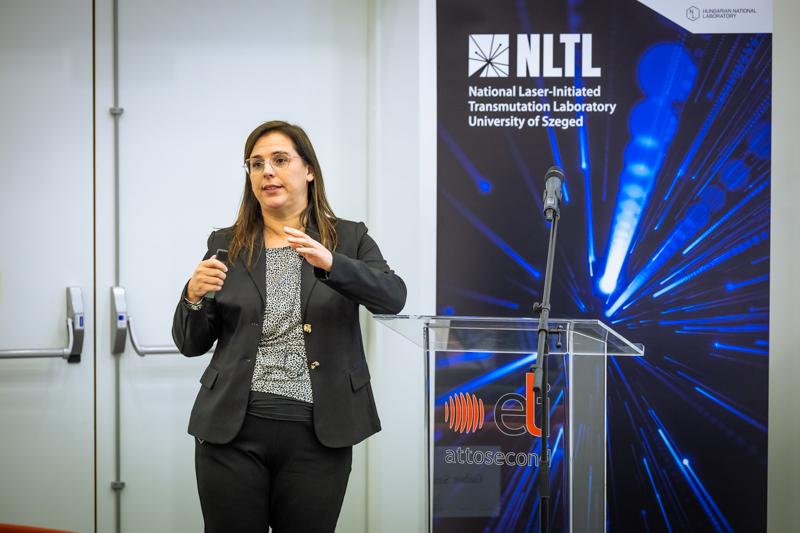 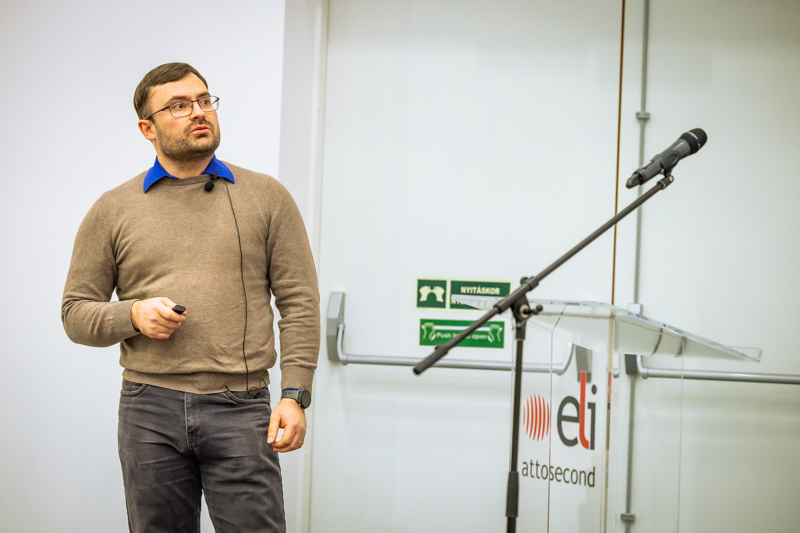 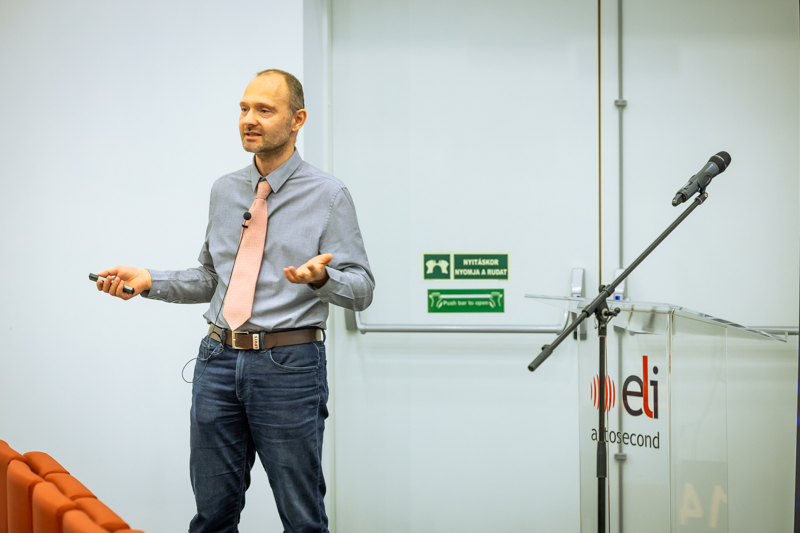 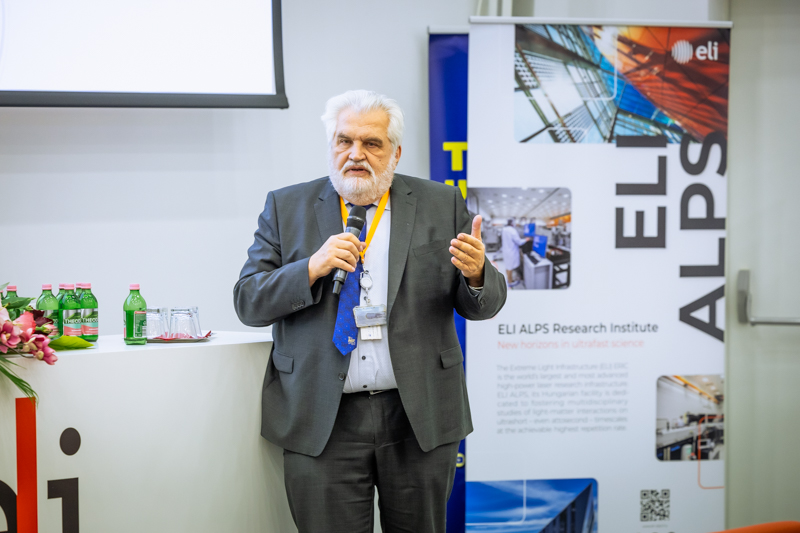 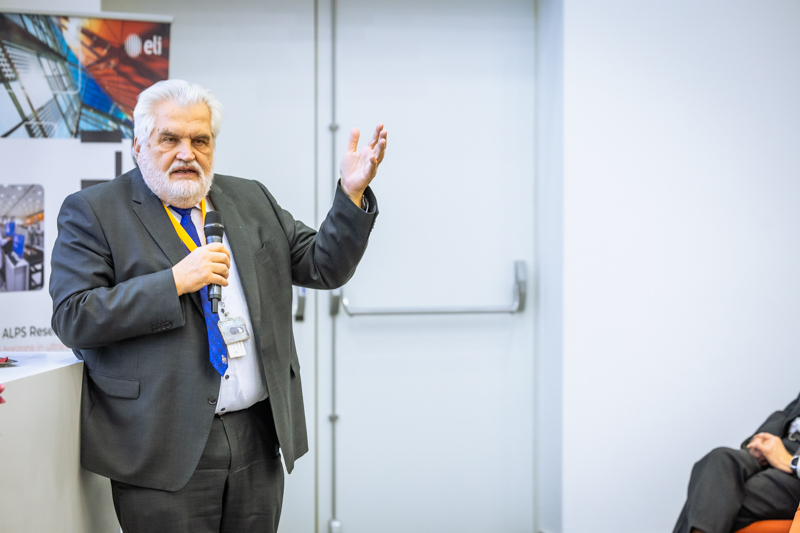 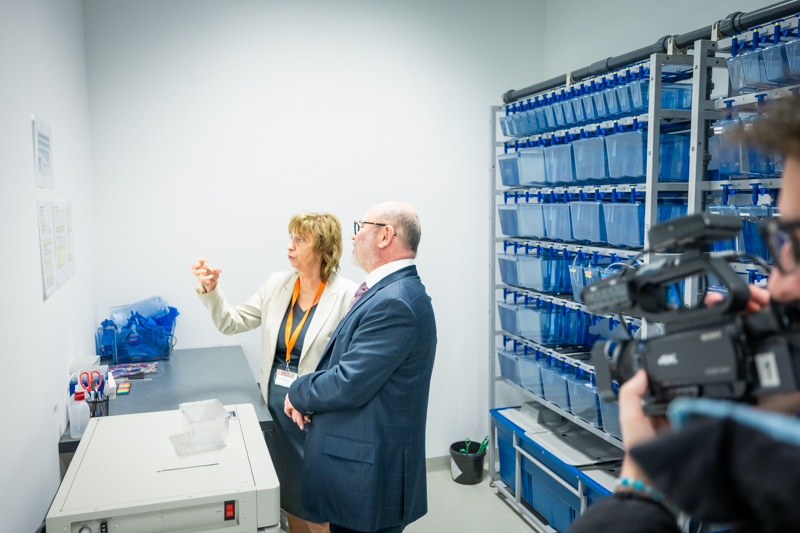 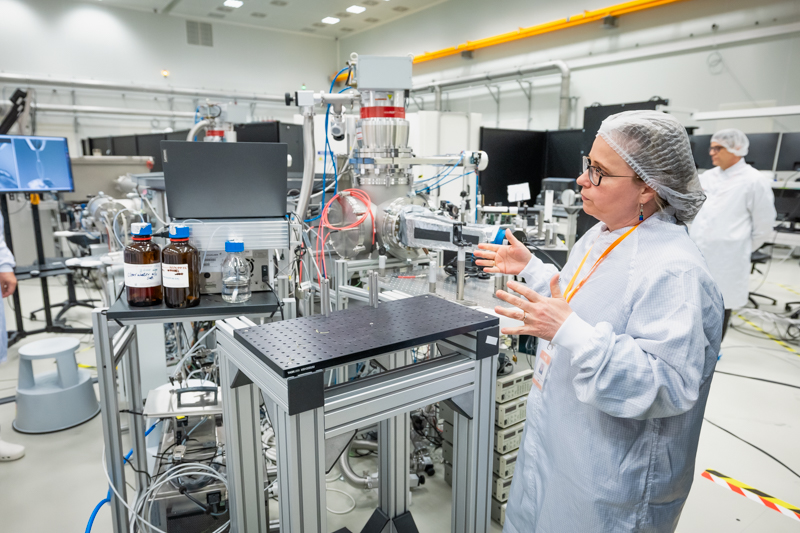 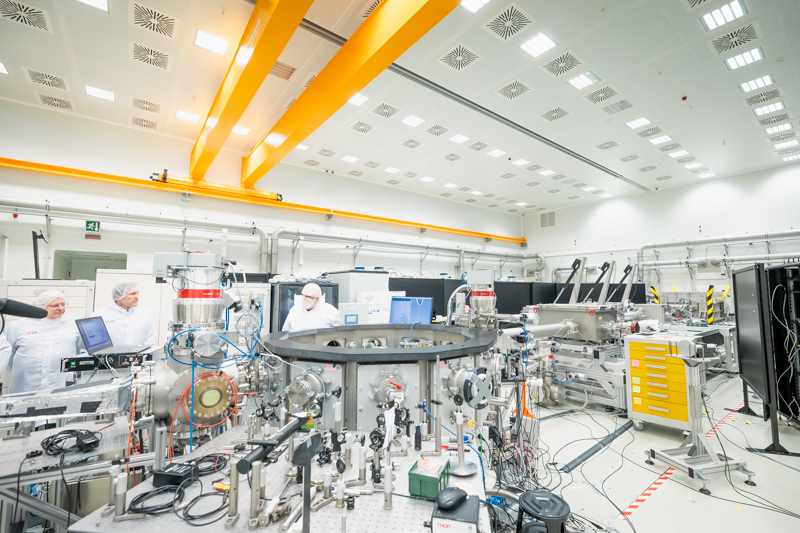 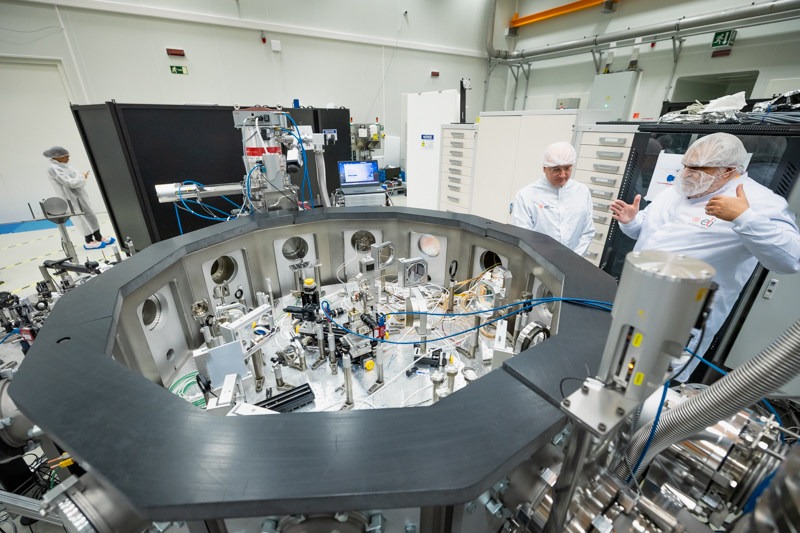 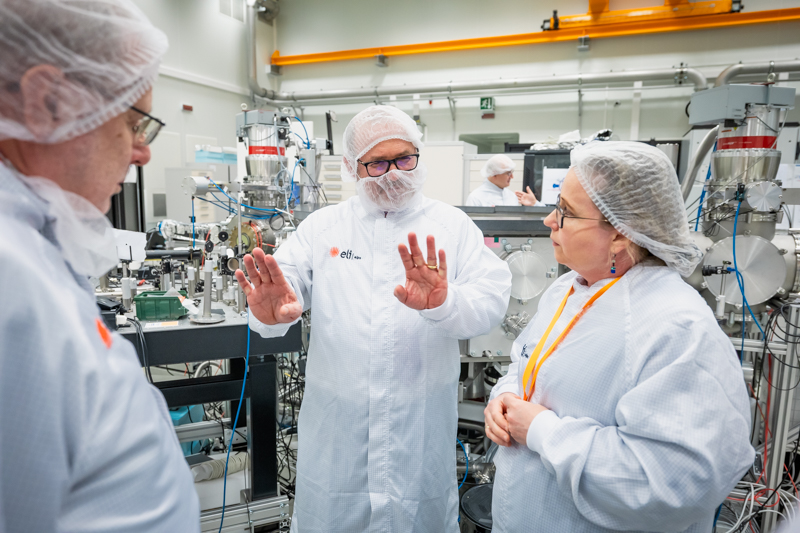   |
| Photos from the National Laser-Initiated Transmutation Laboratory’s project closing conference Photos by Ádám Kovács-Jerney |
Reflecting on the evolving nature of scientific research, Prof. Dr. László Rovó emphasized the increasing interconnectedness of disciplines:
“In the 21st century, the boundaries between scientific disciplines are becoming increasingly blurred,” the rector of the University of Szeged pointed out. “From my own experience, I can attest that the successful use of cochlear implants requires not only medical knowledge but also expertise in fields such as information technology, physics, and engineering. […] These laser and particle sources have opened new avenues for research in physics, chemistry, biology, materials science, and a wide range of interdisciplinary fields.”
The rector went on to discuss the role of the University of Szeged in fostering innovation and groundbreaking discoveries:
“Our vision for the Science Park at the University of Szeged was to make it a central hub for world-class research and discoveries, much like the brain serves as the core of the nervous system. With our twelve faculties covering the entire spectrum of science, the possibilities are virtually limitless. We are committed to fostering excellence, and I am confident that in the coming years, we will achieve outstanding results. Our research in green energy and the automotive industry may be among the first to take the spotlight, as it is already at an advanced stage and awaiting opportunities for real-world application.”
Prof. Dr. László Rovó concluded his speech by quoting Albert Szent-Györgyi:
“Nature is built on fundamental principles. It does not create separate principles for a tree, a bush, a flower, or a human. Everything is based on a single, overarching principle. So, ultimately, it doesn’t matter what we study, as long as we are wise enough to understand the fundamental principles and structure of life.”
Csaba Lantos: Investment in natural sciences fuels economic competitiveness
Csaba Lantos, Hungary’s Minister for Energy, opened his speech by recognizing Gérard Mourou, who, alongside theoretical physicist Toshiki Tajima, was the first to propose the idea of using a laser-driven neutron source for transmutation. He then reflected on Albert Szent-Györgyi’s earlier quoted insight, calling it remarkable for addressing the fundamental structure of living systems – even before the discovery of DNA by the scientific community.
According to Csaba Lantos, Klebelsberg Kuno recognized the transformative potential of natural sciences and their economic impact, which led him to invite Albert Szent-Györgyi to Szeged, thereby paving the way for future progress. “At ELI ALPS, this cutting-edge scientific center, recalling the legacy of Klebelsberg Kuno carries strategic significance. Indeed, he was the one who transformed Szeged into an educational hub where knowledge became a catalyst for economic growth and prosperity.”
The minister emphasized that the government remains committed to these same principles today: strengthening the economy, enhancing competitiveness, supporting research, development, and innovation, and fostering collaboration between the scientific and economic sectors. He also underscored the government’s dedication to building strategic relationships – not only with longstanding partners but also with actors in emerging, fast-growing scientific fields.
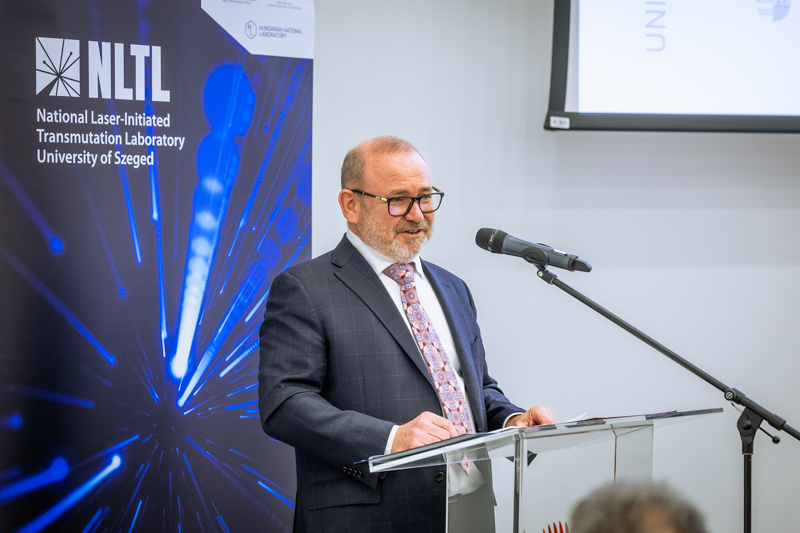
Csaba Lantos, Minister for Energy, at the National Laser-Initiated Transmutation Laboratory’s project closing conference
Photo: Ádám Kovács-Jerney
“It was an honor to take part in two events today that truly embody these values and principles. We celebrated the completion of the University of Szeged Science Park’s utility infrastructure and road network – followed by encouraging announcements about the National Laser-Initiated Transmutation Laboratory’s significant achievements. These milestones highlight investments that strongly indicate the importance of scientific funding,” said the minister.
“Thanks to ongoing collaboration between ELI ALPS and the University of Szeged, continuous advancements in laser technology have made this technology a cornerstone of modern science, providing solutions to some of today’s most pressing challenges. The research conducted here could also play a key role in promoting broader acceptance of nuclear energy, one of the cleanest and most reliable energy sources – thereby supporting both climate action and the nation’s energy security.”
“The state can build laboratories, but it cannot instill them with scientific spirit on its own. This is why we have established a supportive, incentive-based institutional network to foster and promote scientific efforts,” concluded Csaba Lantos.
László Bódis: ‘Missions’ – A new government program for the utilization of research outcomes
During his speech at the conference, Deputy State Secretary for Innovation László Bódis emphasized the importance of the government-backed institutional network. He announced that in recent years, approximately 100 million euros have been allocated annually to the National Laboratories Program, funding projects across various research fields within the higher education research ecosystem.
“Our strategy is built on three main pillars. First, we evaluated the strengths of our research ecosystem, including universities, research networks, and industrial capacities. Next, we identified rapidly evolving scientific and technological fields that are expected to be crucial in the coming years. Finally, we prioritized topics of particular importance to the Hungarian community. Based on these criteria, we established 25 national laboratories and numerous other projects within the talent development program, channeling significant resources toward targeted, mission-driven research,” explained László Bódis.
At the conference, László Bódis announced the launch of a new government program, ‘Missions’, which builds on previous achievements in laboratory research and industrial development. The program is designed to strengthen Hungary’s competitiveness in research, development, and innovation. A key objective is to facilitate the practical application of scientific results, contributing to the creation of a sustainable energy and economic system at both national and international levels.
“This year, we have allocated 10 million euros to the program, and in the coming years, we hope to secure even greater funding,” emphasized the Deputy State Secretary.
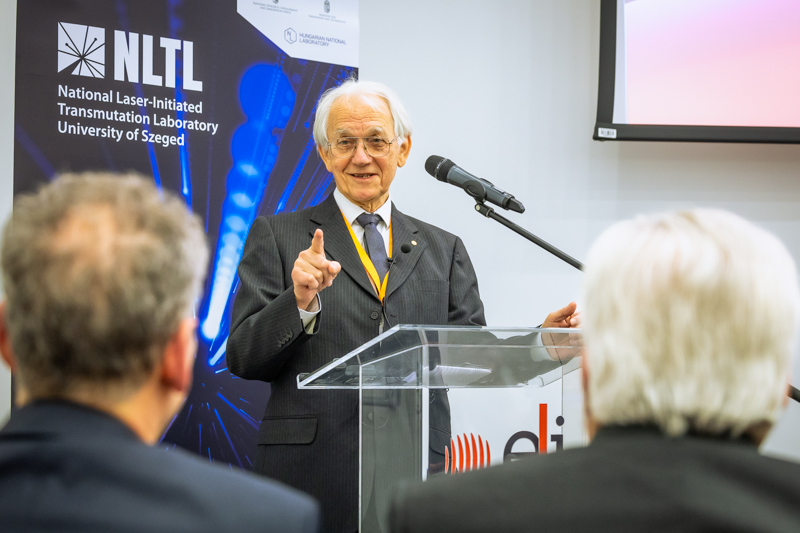
Nobel Prize-winning physicist Gérard Mourou spoke with heartfelt words as he reflected on the founding of ELI and the early days of the laser-based neutron generation program, addressing his remarks directly to the key figures of the project, Károly Osvay and Gábor Szabó.
Photo: Ádám Kovács-Jerney
Péter Domokos: Transmutation project exceeds expectations with innovative neutron generation target
Péter Domokos, physicist and Co-President of the National Research, Development and Innovation Office (NRDI Office), congratulated Károly Osvay and Gábor Szabó during his welcome speech, praising the transmutation project for its exceptional success and surpassing initial expectations. He specifically acknowledged the innovative development of a liquid film, which was used as a target for neutron generation through ion acceleration.
Balázs Gulyás: The transmutation project is focused on the future
Balázs Gulyás, President of the HUN-REN Hungarian Research Network, opened his speech with a touch of humor: “When I first received the invitation, my immediate thought was that this was another example of Gábor Szabó’s characteristic sarcasm. The reason for this was that in British academic circles, a ‘closing event’ often refers to a commemorative ceremony – a reflection on past scientific achievements – and nothing more. However, after reviewing the presentation materials, it became clear to me that this research program is not about the past, but firmly focused on the future.”
Several institutes within the HUN-REN network participated in the transmutation project, with the Atomki Research Institute in Debrecen playing a key role, notably in the development of the neutron counter for neutron production. In this context, Balázs Gulyás stressed that HUN-REN’s goal is to establish itself as a flagship institution within Hungary’s research, development, and innovation ecosystem:
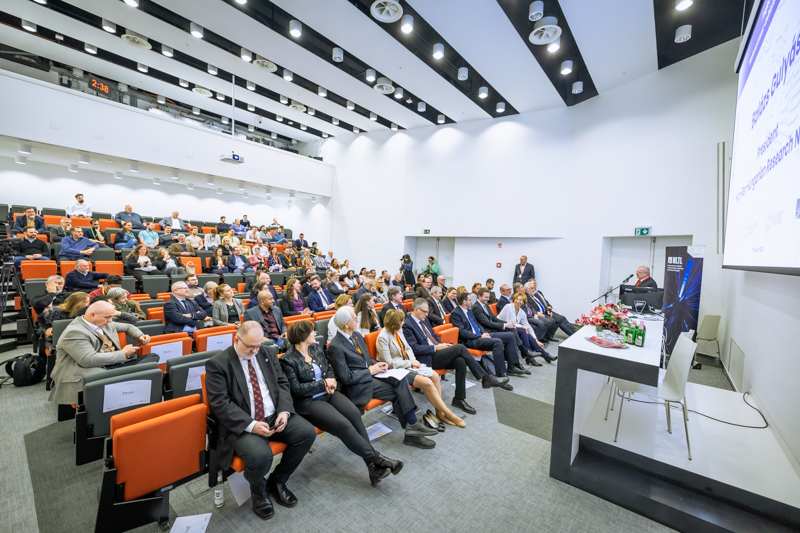
At the National Laser-Initiated Transmutation Laboratory’s project closing conference
Photo: Ádám Kovács-Jerney
Allan Weeks: Laser-based neutron generation is already showing potential for practical applications
Allan Weeks, Director General of ELI ERIC, highlighted the success of the transmutation project, attributing it to the fruitful collaboration between ELI ALPS and the University of Szeged. He explained that the unique combination of advanced infrastructure and specialized expertise at ELI creates unparalleled opportunities for groundbreaking research. This is reflected in increasing global interest, as over the past two years, more than 1,500 scientists from over 30 countries have applied to conduct experiments at the facility. Such high demand underscores ELI’s growing reputation, and the research teams at ELI are actively supporting these visiting scientists in carrying out their experiments.
“Laser-driven acceleration of neutrons, electrons, and protons opens up entirely new possibilities. When paired with the compact size, versatility, and cost-effectiveness of the equipment, it becomes a truly revolutionary technology. This is exactly what the transmutation project exemplifies – an integration of multiple advanced technologies that holds the potential to transform entire industries. It is also important to recognize that Hungary has long been at the forefront of nuclear sciences. Hungarian researchers are among the world’s leading experts in this field, and the concentration of knowledge here is truly world-class. Recent scientific publications have garnered significant attention from the global research community, advancing both fundamental research and practical applications – particularly in medicine and the energy sector. This is why it is crucial to continue this work and further develop the project. It represents a path through which Hungary could establish itself as a global center of excellence,” emphasized the Director General of the ELI research centers.
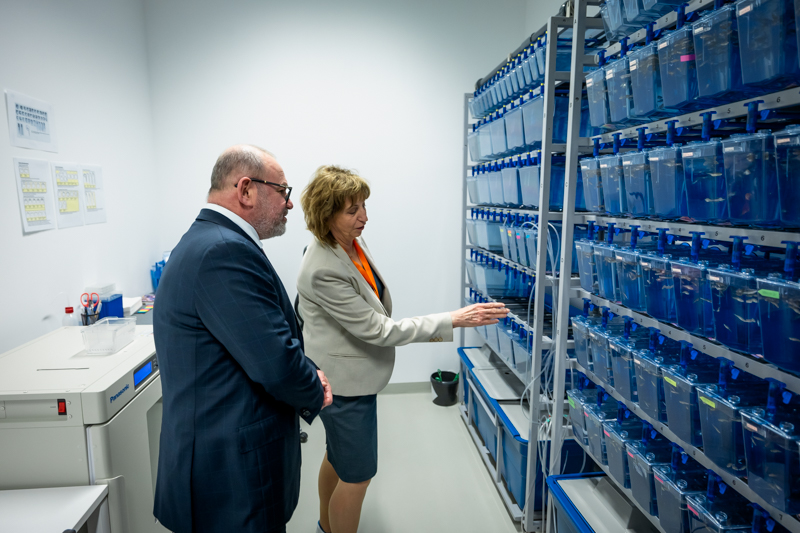
Prof. Dr. Katalin Hideghéty, Head of the Radiotherapy Unit at the Albert Szent-Györgyi Health Center’s Department of Oncotherapy, and leader of the ELI ALPS biomedical research group, shows the experimental zebrafish laboratory at ELI ALPS to Minister Csaba Lantos.
Photo: Ádám Kovács-Jerney
To conclude this article, we provide an overview of the key presentations on various aspects of laser-based neutron generation technology and its broad applications:
The first part of the conference featured presentations by Károly Osvay, Parvin Varmazyar, Attila Kovács, and Zoltán Elekes, who examined different facets of laser-based neutron generation. Károly Osvay offered valuable insights into the transmutation project; followed by Katalin Hideghéty, who presented on radiobiological experiments using laser-generated particles. Gérard Mourou then reflected on the establishment of the ELI research centers.
The final part of the conference focused on real-world applications. Sandra Moretto discussed neutron beam-based truck inspection, Mantas Grigalavicius delved into the effects of neutron radiation on cells, and Zoltán Elekes explored the laser-based production of medical isotopes.
To gain more insight into the outcomes of the National Laser-Initiated Transmutation Laboratory project, be sure to read our interview with Károly Osvay.
Original Hungarian text written by Sándor Panek
Feature photo: Károly Osvay, Head of the National Laser-Initiated Transmutation Laboratory established at the University of Szeged
Photo by Ádám Kovács-Jerney
